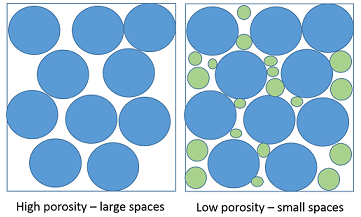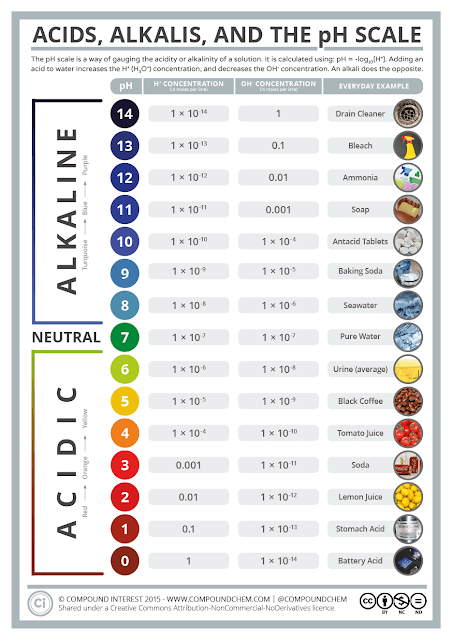Intern Project:
Methods for Representing Field Hydraulic Conductivity with the Ksat
Ks = Saturated Hydraulic Conductivity
of soils saturated in the lab. These values represent bottom up saturation that
does not occur in the field. Meter’s Ksat provides hydraulic conductivity
constants in this form.
Kfs = Saturated Hydraulic Conductivity
of soils saturated in the field. These values represent top down saturation
that occurs in the field. Meter’s Saturo provides hydraulic conductivity
constants in this form.
Despite the multitude of instruments available for
determining the Ks of a soil, it can be difficult to provide precise
and accurate field values for hydraulic conductivity. Meter’s “Ksat” makes
evaluation of hydraulic conductivity efficient, but issues of accuracy and precison
commonly arise during sampling. While laboratory analysis of Ks
values will always differ slightly from field values (Kfs), with the
right technique it is possible to minimize artificial macropores, control compaction,
and ensure proper saturation in order to minimize the difference between Ks
and Kfs as determined by the Ksat and Saturo respectively.
Its firstly important to run the Ksat using the proper
technique. When using the falling head method, I found the optional addition of
the overflow tube to be essential. By starting the run at a higher pressure
head, there is more time to begin a manual start in the case that the autostart
fails. Additionally, it measures more data points for a more accurate curve.
The standard 5cm run is not inaccurate, and works well in many scenarios, but
when working with soils of extremely low or high permeability, I found the
overflow tube to be essential and thus decided to use it for nearly every run.
Ultimately weather or not to use the overflow tube is a minor
difference compared to your choice of sampling method. When gathering a soil
sample, it is important to monitor two things: macropores and compaction. Because
both of these qualities have a large influence on water movement, artificial
introduction of either attribute will alter Ks values significantly.
It is also essential to monitor the level of saturation in a soil before
sampling as excess water will influence the presence of macropores and
compaction.
Macropores
It is best practice to never remove twigs, bark, or other
organics buried in a sample. Sometimes, small pieces of mulch or other organics
will stick out of the top of the ring and prevent the cap from closing the
sample. Even though it is natural to want to remove the obtrusion, doing so
will artificially open up a macropore and increase the measured Ks
from its “true” value. Therefore, it is best to avoid problematic organics
beforehand by inserting the core in a location where organics will not be
obtrusive. It is also possible to cut off the excess material without removing
the obtrusion altogether.
It is important to note that this can occur in the field as
well as with bagged mix. In the field, a mulch layer sometimes makes macropore
control more difficult to manage due to large organics hindering the sampling
procedure. Since extremely large organics will not fit into the ring sampler at
all, it is an important distinction that Ks values will not
represent water movement around areas with any kind of oversized consolidated
material where Kfs measured by field instruments such as the Saturo
may be able to.
A similar source of error occurs when the ring sampler is not
filled in completely. The Ksat provides values with an understanding that the
sample size is equal to the exact size of the ring sampler. This means that a
sample that is not filled in entirely will inaccurately interpret quick water
movement through empty areas as an incredibly well draining soil. In reality,
that soil may have low permeability, but has large open areas and thus reports
an artificially high Ks. While sampling from a bagged mix, it is
easy to ensure a complete sample. However, a field core often does not gather a
completely filled ring, so it is important to fill in the ring with excess
material from the bottom of the sample hole in this scenario. In my study, the
average Ks value of field cores that had either filled properly
during the initial cut, or were filled in with excess material, differed from
the Kfs value by only 4.11%. On the other side, cores with remaining
unnatural empty space, averaged a Ks that differed from Kfs
by 150.47%. Therefore, it can be seen that this is an adequate solution in some
cases, however it is important to acknowledge that this many not hold up in
other soils, such as heavy clays with few large openings, and this method of
filling in a core should only be used as a last option. It is always best to
achieve a full core during the initial cut.
Compaction
On the other hand, empty space should actually be preserved
in the form of natural pores. It is important to avoid compaction that will destroy
micropores and prevent water movement resulting in an artificially low
hydraulic conductivity value. In a field core, this is easy to achieve. Simply
insert the ring sampler and avoid pressing down on the area inside the ring.
Once the core is taken, it is unlikely the sample will be compacted inside the
ring, where it will remain for the whole of the Ksat run. However, when
sampling a bagged or bulk soil, that is not yet a part of any field system,
compaction can be tricky to manage. Compaction should not occur artificially,
but at the same time, a bagged soil may be looser than it would be in the field
which will also induce inaccurate values.
My method for precise control of compaction was to take a
“field” core in the lab. Bagged sample was poured into a 2” x 6” x 9” aluminum
tray and a half cup of water was added to the soil. Since the tray was equal
height to that of the ring sampler, enough sample was added to line up with the
top of the tray so that a core could be taken within this system that would
fill the ring entirely. The wetted sample was then tossed gently to ensure a
good mixture and even wetting before taking the core. Afterwards the core was
inspected to check that it was filled completely on both sides. The success of
this sampling method was due to its consistency which led to values that were
precise and accurate. Because the same tray was used every time and filled to
the same height, each sample would be filled with the same amount of soil at
the same level of compaction. If the ring sampler was to be filled by pouring
loose sample into the ring, levels of compaction would vary depending on how
much material was stuffed into the ring. This would be especially true if
different people were filling the ring each time, as one person may apply more
pressure than another person would. When creating a standard operating
procedure, it was important to be sure that many different people could
complete this routine and receive similar results.
Performing this method without the aluminum tray also failed.
This is because without the aluminum tray, an excess of water and compaction
was needed in order to form a sample pile that was tall enough to fill a core.
Therefore, Ks values came out to be significantly smaller (<1
in/hr) and every sample, regardless of the type of soil, came out similar. This
was great for precision, but too inaccurate to be a worth while method. This
issue did not arise with the aluminum tray since it could be filled completely
and be at the correct height without excess water or compaction.
Saturation
This benefit of water control, as seen
in the aluminum tray core method, is another essential factor for obtaining
precise and accurate Ks values from the Ksat. While the structure of
a soil is of course dependent on its components, water is necessary to allow
those components to begin forming aggregates. Too much water however will
destroy structure altogether, especially as the amount of water begins to
surpass the amount of soil. When the sample is given time to sit in water for
saturation, it will absorb water and theoretically be saturated at the end of
the allotted time. If the sample reaches saturation significantly before the
end of the time, such as the case for a sample which had too much water added
beforehand, the structure will begin to deteriorate in the present of excess
water.
This is evident in field cores taken
before and after rain. Field cores of a location that was being watered
regularly, but had not had rain, had an average Ks of 9.84 inches
per hour. After the rain, when the soil was excessively wet, a field core
reported a Ks of 1.47 inches per hour. All samples were saturated
during standard operating procedure of the Ksat, however the core taken after
the rain was likely already saturated before being saturated in the lab. The
same phenomena occurred with bagged sample, where wet soil put into a bag had
lower Ks values than its dry counterpart.
Shifting values due to excess watering can be avoided if
water content is controlled from the start. Alternatively, samples can be
saturated for varying amounts of time dependent on when they become saturated
(indicated by a glistening surface). While attempting to put together an SOP, I
decided to make each sample saturate for the same amount of time, which in
retrospect is not successful for obtaining precise and accurate values. Instead,
it is important that excess water is not added which will destroy the structure
developed during saturation.
Conclusion
Without recreating field conditions entirely, it is very difficult to determine Ks values that accurately reflect field values. However, by avoiding opening up artificial macropores, monitoring compaction, and controlling moisture, it is possible to generate values close to Kfs in the lab. The Ksat is an incredible tool when sampling methods are streamlined and attention is put into sampling such that the soil core retains the same properties as it would have in the field. So as long as the details are right, saturated hydraulic conductivity can be measured precisely and with ease.
Nathan Orlyk
CHSTR Intern 2023






















